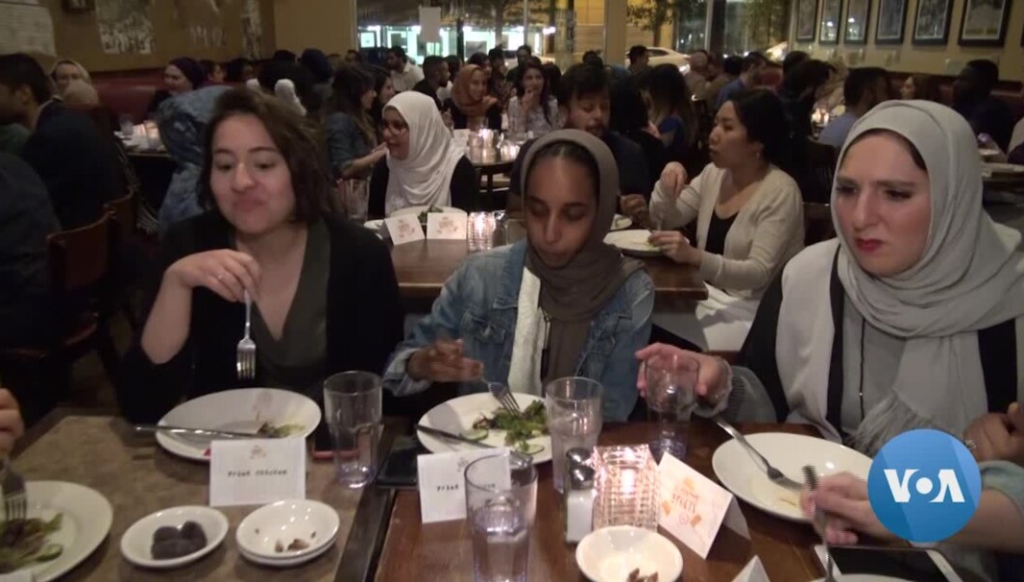
Cultural Mosaic Ramadan, the ninth month of the Islamic lunar calendar, is observed by Muslims worldwide as a period of fasting, prayer, reflection, and community. In the United States, Ramadan holds a special significance as Muslim Americans come together to celebrate their faith and heritage while embracing the diverse cultural landscape of the country. This exploration of Ramadan in the USA delves into the rich traditions, diverse practices, and communal spirit that define this sacred month for millions of Muslims across the nation.
Introduction Cultural Mosaic to Ramadan
Significance of Ramadan in Islam
Ramadan is considered the holiest month in Islam, commemorating the revelation of the Quran to the Prophet Muhammad. It is a time for Muslims to engage in acts of worship, self-reflection, and charity, as they seek to deepen their spiritual connection with Allah and purify their hearts and souls.
Observance of Fasting
One of the central pillars of Ramadan is fasting, which entails abstaining from food, drink, smoking, and marital relations from dawn until sunset. Fasting is obligatory for adult Muslims, except for those who are exempted due to health reasons or other circumstances. The fast is broken each evening with a meal known as iftar, and the pre-dawn meal before fasting begins is called suhoor.
Diversity of Muslim Communities
Multicultural Fabric of Muslim Americans
The Muslim American community is incredibly diverse Cultural Mosaic, representing a wide range of ethnicities, cultures, and traditions from around the world. From Arab Americans to South Asians, African Americans to Latinx Muslims, the Muslim population in the USA reflects the country’s rich tapestry of diversity and pluralism.
Regional Variations in Practices
While the core rituals of Ramadan remain the same, there are variations in how the month is observed across different regions and communities in the USA. Cultural customs, culinary traditions, and family practices all contribute to the unique Ramadan experience of each individual and community.
Observance and Practices
Community Gatherings and Taraweeh Prayers
Ramadan is a time of heightened spirituality and communal solidarity, as Muslims come together for prayers, meals, and social gatherings. Taraweeh prayers, performed each night during Ramadan, provide an opportunity for worshippers to recite the Quran, engage in extra prayers, and foster a sense of spiritual connection and unity.
Charitable Giving and Acts of Kindness
Cultural Mosaic, Charity (zakat) and acts of kindness are integral aspects of Ramadan, as Muslims are encouraged to give to those in need and help alleviate the suffering of the less fortunate. From feeding the hungry to providing financial assistance to the needy, Muslims in the USA engage in a wide range of charitable initiatives and humanitarian efforts during Ramadan.
Challenges and Opportunities
Balancing Religious Observance with Daily Life
For many Muslim Americans, balancing the demands of fasting and religious observance with the responsibilities of work, school, and family life can be challenging during Ramadan. However, it is also a time of spiritual growth, self-discipline, and renewal, as individuals strive to deepen their connection to their faith and community.
Addressing Food Insecurity and Poverty
Ramadan serves as a time of heightened awareness of social justice issues, including hunger and poverty. In response, Muslim communities in the USA actively engage in charitable initiatives, food drives, and volunteer efforts to address food insecurity and support marginalized individuals and families during Ramadan and beyond.
Cultural Celebrations and Festivities
Eid al-Fitr: Celebration of Breaking the Fast
The end of Ramadan is marked by the celebration of Eid al-Fitr, a joyous holiday that commemorates the conclusion of fasting and the beginning of the new lunar month of Shawwal. Muslims gather for communal prayers, festive meals, and social gatherings, exchanging greetings, gifts, and well-wishes with friends, family, and neighbors Cultural Mosaic
Cultural Traditions and Festive Foods
Cultural Mosaic Eid al-Fitr is celebrated with a variety of cultural traditions and festive foods that vary from region to region and community to community. From sweet treats like baklava and maamoul to savory dishes like biryani and kebabs, the culinary delights of Eid reflect the rich diversity of Muslim American cuisine.
Interfaith Engagement and Outreach
Building Bridges of Understanding
Ramadan presents an opportunity for interfaith dialogue and outreach Cultural Mosaic, as Muslim Americans engage with neighbors, colleagues, and community members of other faiths. Through open houses, community events, and charitable initiatives, Muslims in the USA foster understanding, mutual respect, and cooperation across religious lines.
Breaking Down Stereotypes and Misconceptions
Cultural Mosaic By opening their doors and hearts during Ramadan, Muslim Americans challenge stereotypes and misconceptions about Islam and Muslims, promoting a message of peace, tolerance, and coexistence. Through meaningful interactions and shared experiences, they build bridges of understanding and forge lasting bonds of friendship with people of diverse backgrounds.
Conclusion: Unity in Diversity
In conclusion, Ramadan in the USA is a time of spiritual renewal, cultural celebration, and communal solidarity for Muslim Americans across the country. As they fast, pray, and engage in acts of charity and kindness, Muslims embody the values of compassion, empathy, and unity, enriching the fabric of American society with their diverse traditions and shared humanity.
In this Cultural Mosaic Ramadan in the USA, we have delved into the rich tapestry of traditions, practices, and experiences that define this sacred month for Muslim Americans. From fasting and prayer to community engagement and interfaith outreach, Cultural Mosaic Ramadan serves as a time of reflection, renewal, and unity, embodying the spirit of diversity and inclusivity that defines the American experience.
